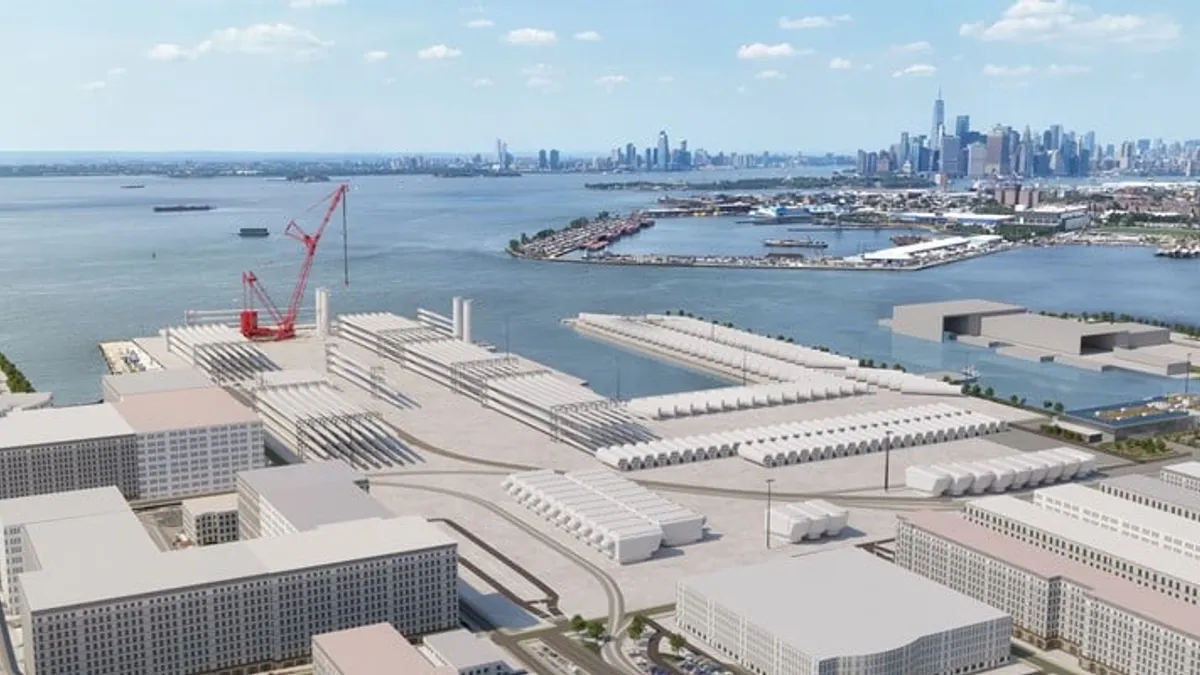Dive Brief:
- Skanska’s business remains anchored by a strong performance in U.S. construction — especially infrastructure — as it weathers a weaker residential and commercial property development market.
- On Friday, the Sweden-based developer and contractor reported 2.58 billion Swedish crowns ($242 million) in profit for the second quarter of 2024, an increase of 94% from the same period a year ago. In construction alone, Skanska reported 1.5 billion crowns in profit.
- “The market is really strong. We’ve been very successful with identifying and bidding and winning the right type of jobs over there in that geography,” CFO Magnus Persson said of U.S. construction during an earnings call Friday. Nonetheless, he called the U.S. commercial property market “quite slow still,” though that sector has gained momentum in Europe and the Nordics.
Dive Insight:
Skanska, an experienced builder of infrastructure projects, has seen its backlog increase steadily since 2020, and it remains historically elevated for the contractor. In Q2, Skanska reported $42 billion crowns of order bookings in the U.S. — about two-thirds of its bookings for the quarter — and counted 24 months of U.S. construction work at the period’s end.
CEO Anders Danielsson said both civil infrastructure — roads and bridges — and social infrastructure — such as hospitals, schools and airports — have helped drive the company’s growth.
An example of a major infrastructure win by Skanska in the quarter is the $861 million, 73-acre project to transform the South Brooklyn Marine Terminal into an offshore wind port.
“The U.S. operation is becoming more and more important for the company. It's already today 50% of the revenue in the construction stream,” Danielsson told Construction Dive in an interview Friday. “And I also would say the U.S. operation together with the commercial development divestment we made in the quarter is what's driving the improvement in the profitability.”
In Q2, Skanska recorded five major divestments of commercial properties, two in Europe and three in the Nordics, and reported 1.19 billion crowns in profit from divestments in the quarter.
Ongoing troubles in commercial property
Despite weakness in the U.S commercial market — which Skanska has attributed to high inflation rates, meager sales volumes and low-return-to office rates — the company has seen improvements in the commercial property market in Europe and the Nordics, and has no plans to pivot away from developing and leasing commercial space.
“We don’t have any ambition to sort of sit on properties that are completed,” Persson said during the earnings call. “The business model is still to develop and sell. But we do have the financial endurance, if you will, to not have to fire sale things if we can’t get the right bids for them.”
Skanska announced in April that Persson would exit the company pending the appointment of a replacement.
Danielsson told Construction Dive focusing on the higher value commercial properties will be key to success in the market. Should interest rates drop, he anticipates investors will jump, but the focus will be on the highest-caliber spaces, as opposed to more, cheaper leases.
"We can see that the market is getting even more polarized, but the Class A building of a high quality, in the right location, they are definitely the winner in this market situation,” Danielsson told Construction Dive. “Most companies want the employees to get back to the office which is good for the business. And one good way of doing that is to have attractive offices in good locations where it's easy to commute and so on. So that's where we positioned ourselves.”
Correction: This story has been updated with correct information about the location of Skanska’s five divestments.














